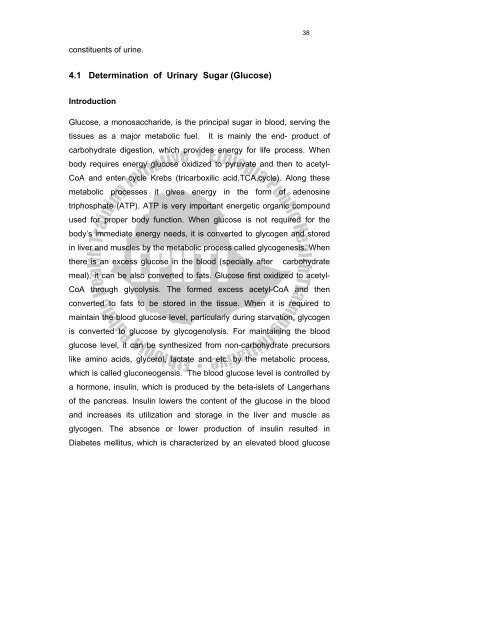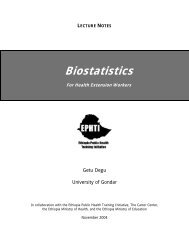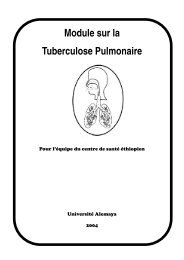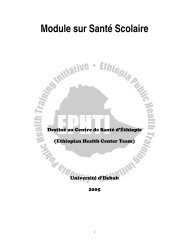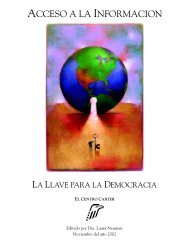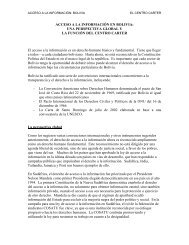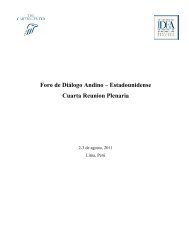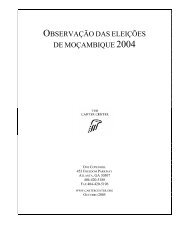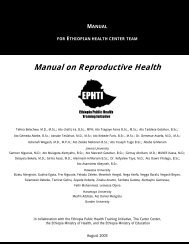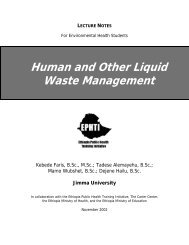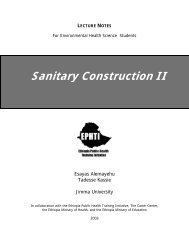Urinalysis - The Carter Center
Urinalysis - The Carter Center
Urinalysis - The Carter Center
You also want an ePaper? Increase the reach of your titles
YUMPU automatically turns print PDFs into web optimized ePapers that Google loves.
38<br />
constituents of urine.<br />
4.1 Determination of Urinary Sugar (Glucose)<br />
Introduction<br />
Glucose, a monosaccharide, is the principal sugar in blood, serving the<br />
tissues as a major metabolic fuel. It is mainly the end- product of<br />
carbohydrate digestion, which provides energy for life process. When<br />
body requires energy glucose oxidized to pyruvate and then to acetyl-<br />
CoA and enter cycle Krebs (tricarboxilic acid,TCA,cycle). Along these<br />
metabolic processes it gives energy in the form of adenosine<br />
triphosphate (ATP). ATP is very important energetic organic compound<br />
used for proper body function. When glucose is not required for the<br />
body’s immediate energy needs, it is converted to glycogen and stored<br />
in liver and muscles by the metabolic process called glycogenesis. When<br />
there is an excess glucose in the blood (specially after carbohydrate<br />
meal), it can be also converted to fats. Glucose first oxidized to acetyl-<br />
CoA through glycolysis. <strong>The</strong> formed excess acetyl-CoA and then<br />
converted to fats to be stored in the tissue. When it is required to<br />
maintain the blood glucose level, particularly during starvation, glycogen<br />
is converted to glucose by glycogenolysis. For maintaining the blood<br />
glucose level, it can be synthesized from non-carbohydrate precursors<br />
like amino acids, glycerol, lactate and etc. by the metabolic process,<br />
which is called gluconeogensis. <strong>The</strong> blood glucose level is controlled by<br />
a hormone, insulin, which is produced by the beta-islets of Langerhans<br />
of the pancreas. Insulin lowers the content of the glucose in the blood<br />
and increases its utilization and storage in the liver and muscle as<br />
glycogen. <strong>The</strong> absence or lower production of insulin resulted in<br />
Diabetes mellitus, which is characterized by an elevated blood glucose


